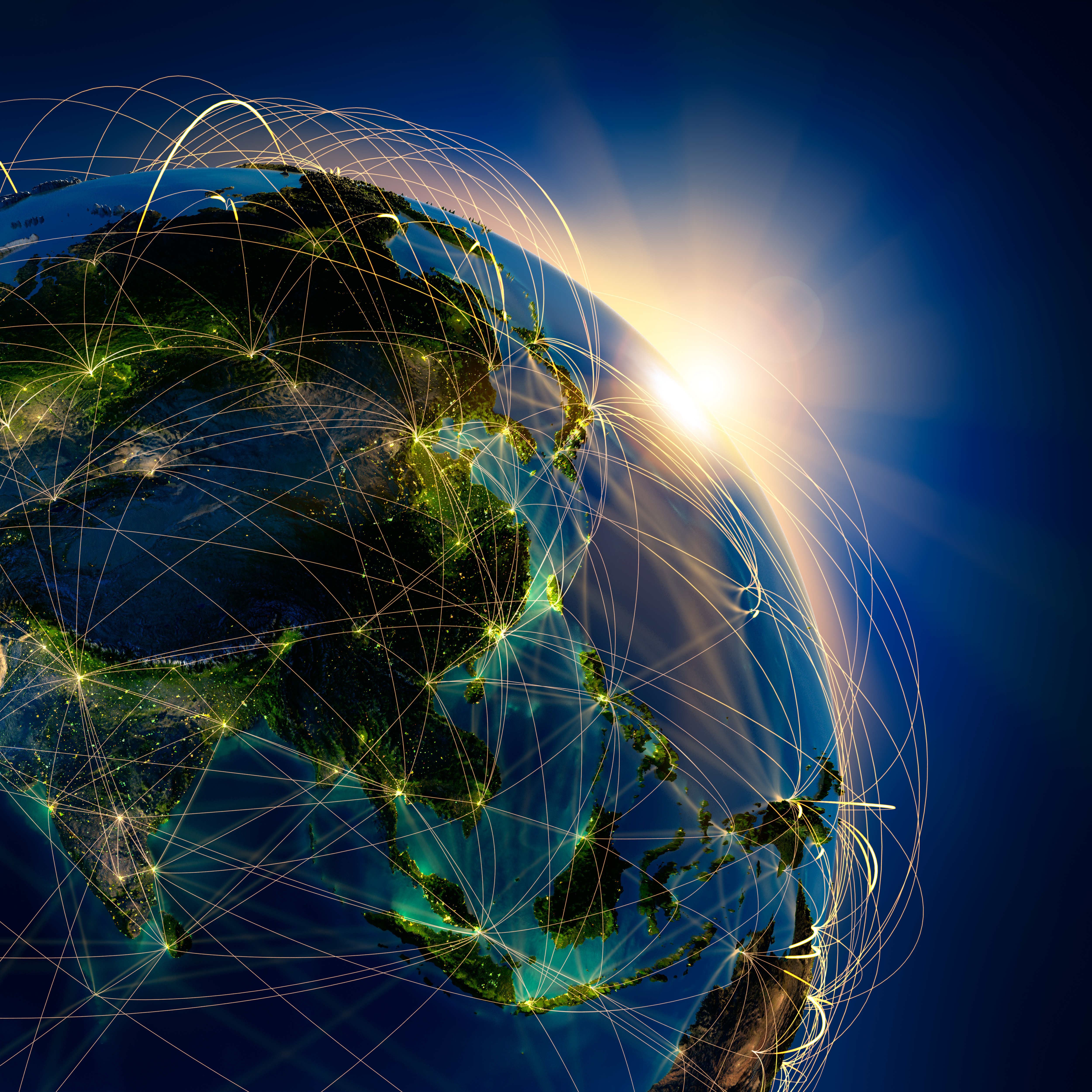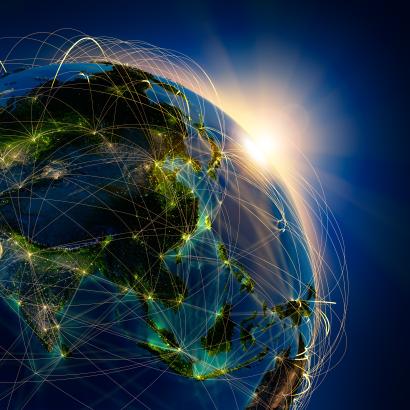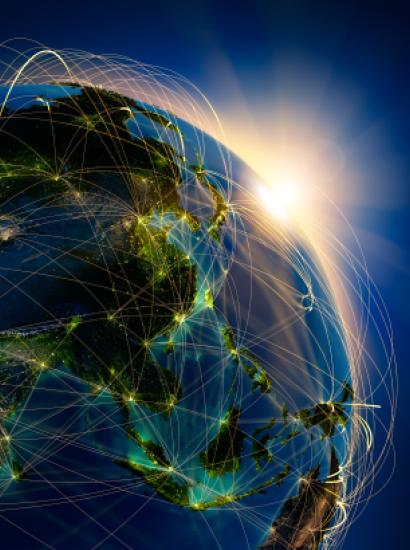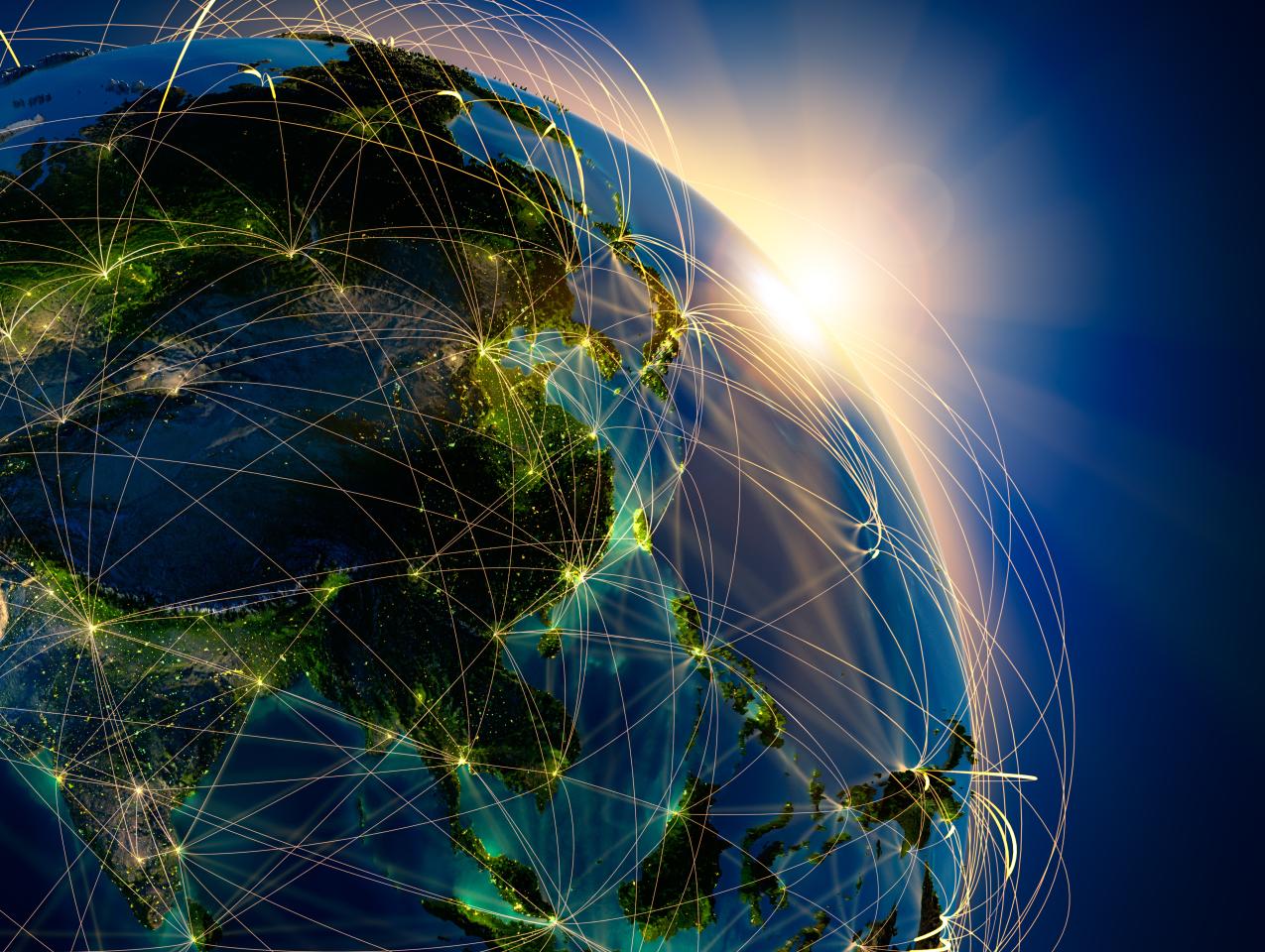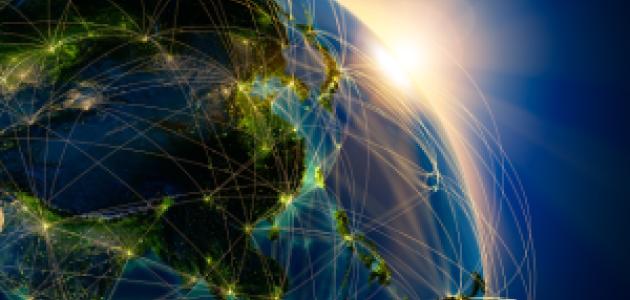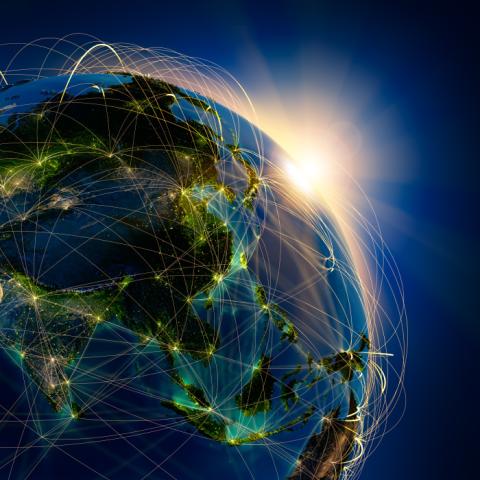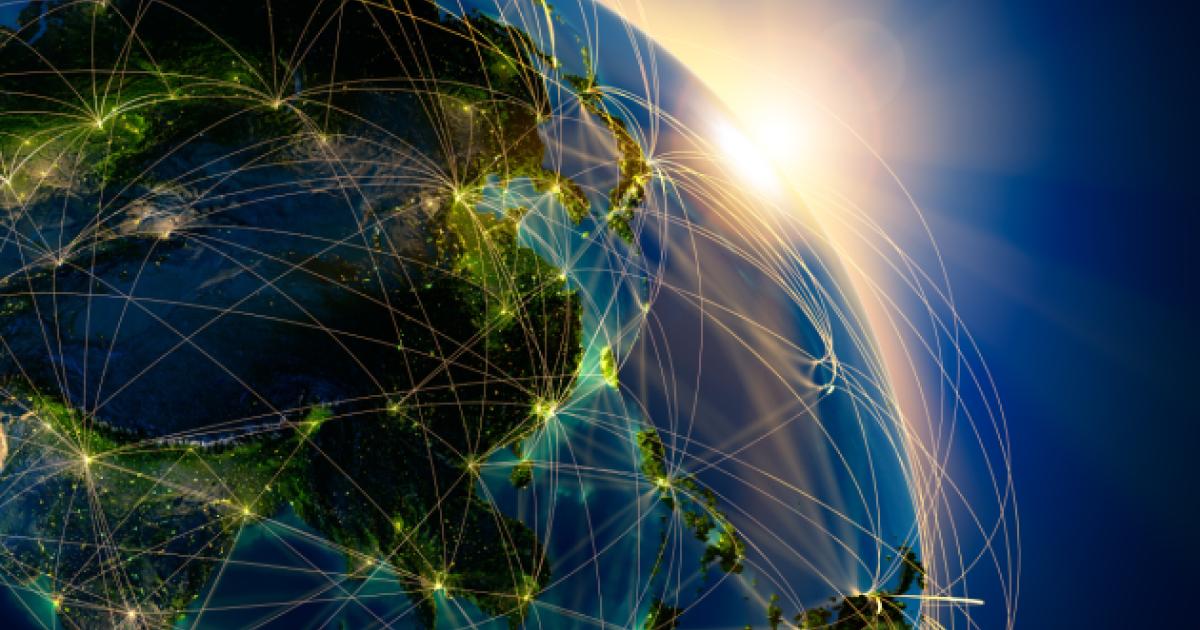Editor’s note: This essay by Michael R. Auslin is published by the Hoover Institution as part of a new initiative, Socialism and Free-Market Capitalism: The Human Prosperity Project.
The world is about to witness a demonstration of whether an authoritarian state can take over a free society and keep it economically flourishing while individual rights are increasingly extinguished. If that sounds like a paradox, it is, given that the historical record includes no examples of such a transition to authoritarianism where, ultimately, economic growth and development continued while freedom languished. Indeed, despite appearances to the contrary, there is little evidence that wealthy or free countries are eager to adopt the repressive systems of illiberal powers. Despite this, the People’s Republic of China (PRC) is relentlessly pushing its laboratory experiment on Hong Kong, where the Chinese Communist Party (CCP) recently passed a draconian national security law, repudiating its promises to ensure the former colony’s freedoms.
The organs of CCP control have already been established in Hong Kong, and the new law makes clear that any activities that Beijing considers to be secessionist, subversive, or terrorist will lead to prosecution. Pro-democracy activists have already been arrested under the new law, including several attempting to escape to Taiwan; democracy leaders such as Jimmy Lai have been charged, chilling free expression. Offenses considered serious enough will be taken out of the Hong Kong legal system entirely and prosecuted under mainland law after transferral of the accused to Beijing. Tighter controls on foreign media and organizations as well will reduce the free flow of information in the territory; already Hong Kong libraries are being stripped of books by authors the Communist regime in Beijing considers threatening.
How will the disappearance of Hong Kong’s traditional freedoms, and the imposition of an authoritarian system of control, affect the territory’s economic activity? What will remain of civil society in Hong Kong once the law is fully executed? In short, will Hong Kong retain any of the qualities of free life that marked it for so many decades?
These are not academic questions, though as the world watches the disappearance of a free Hong Kong, they lead us to the broader issue of which socioeconomic system provides a better way of life, socialism or capitalism. Once discarded as a relic of the Cold War, presumed no longer to matter at the “end of history,” the question of socialism versus capitalism has returned with a vengeance, almost solely because of China’s rise.
Is Modernization a Mirage?
The extraordinary growth of China since the “reform and opening up” era was launched by then–paramount leader Deng Xiaoping in 1979 has been taken as the counterpart to the so-called “Washington Consensus.” That neoliberal argument assumed that free market capitalism and globalization provide the most successful pathway to economic prosperity and individual freedom; its heyday was during the Reagan and Clinton administrations in the 1980s and 1990s. In contrast, the PRC’s supporters claim that an illiberal political system can foster a more dynamic economic environment, leading to a better life for its citizens. Particularly since the 2008 global financial crisis—and more recently after the COVID-19 global pandemic that began in Wuhan, China—Beijing has touted the superiority of its approach, boasting that it avoided the meltdown after the collapse of America’s subprime mortgage market and, in 2020, that it was better able to control the coronavirus outbreak and correspondingly suffered less social and economic disruption.
Until the coronavirus pandemic, the world was increasingly torn between the Western, liberal model and China’s centralized Leninist model. The PRC’s seemingly unstoppable rise from 1980 through 2015, when its stock market faltered and macroeconomic growth began to level off, led many to assume that it indeed had found a better means of ensuring economic growth and social development than had the West. Within the space of a generation, China went through several stages of development, starting from near subsistence (especially in the countryside) to middle-income status around 2010. The 1980s and 1990s in particular witnessed an expansion of market-oriented mechanisms, starting in coastal special economic zones and expanding to major inland urban centers.
Since the PRC’s political system was indelibly connected with the economic model, development also strengthened the state, especially once the CCP began to reassert Leninist-style control after the 2008 global financial crisis. Government stimulus packages and increased government control over the economy led to arguments that political freedom and free market capitalism were not necessary for robust economic growth. Rather, Chinese officials asserted that a less representative political structure run by trained technocrats would avoid the messiness inherent in democratic polities, achieving superior standards of living, not to mention better educational and scientific outcomes, as well as greater social stability. This last point was reiterated by Beijing in light of the summer 2020 civil disturbances that broke out across the United States.
Such claims oversimplify the complicated patchwork that represents socioeconomic development in China, America, and the rest of the world. There are very few pure political and economic regimes, outside of academic theory. In the Indo-Pacific region in particular, just about every type of political and economic system coexists, making a complex tapestry that continues to evolve as states respond to internal needs and external conditions.
Democratic nations such as Japan and India adopted a form of state capitalism that gave a powerful role to national government in establishing a sphere of economic activity that lies somewhere between socialism and free market capitalism, yet the results have been very different in each. In Japan, a focus on export industries and manufacturing allowed it to become the world’s second-largest economy for decades; India, however, found its neosocialist and autarkic economy falling further behind the rest of the world, until near collapse forced the adoption of economic reform in the early 1990s. Other Asian nations, such as South Korea, moved fitfully along the road of both political and economic liberalization simultaneously in the 1980s, rapidly increasing per-capita GDP while giving birth to a freewheeling political system; Taiwan largely followed this route as well during the 1990s. The PRC, as is well known, opened up its southern coastal regions as special economic zones starting in the late 1970s, giving them freedoms and access to the global economy that other, interior regions did not share.
In short, there was and remains a spectrum of socioeconomic models throughout the Indo-Pacific, with most nations occupying positions somewhere short of either pure free-market capitalism or socialism. Even North Korea, run by the despotic Kim family, has attempted to stabilize its economy by allowing private markets to operate.
The broader question that this academic debate addresses is, what is the best balance of political freedom and economic openness? The Western modernization model, apotheosized in the Washington Consensus, presumes that political and economic liberalization go hand in hand. In particular, the post–World War II experience led policy makers in America and Europe to assume that economic liberalization and globalization would create increasingly strong middle classes that would demand political representation, thereby assuring ongoing political liberalization. A robust civil society would ensue, once civil rights and individual freedom were protected by democratic regimes. Human prosperity would be best ensured by this virtuous cycle, a balanced liberalization among politics, economics, and civil society.
Ignoring Human Rights
China’s growth over the past three decades has fundamentally challenged the West’s modernization thesis, yet its own experience shows the dangers in assuming that political repression can coexist beside economic vitality. As Richard McGregor points out in his book The Party, many of the dazzling Shanghai and Beijing skyscrapers that observers point to as proof that China has a market economy were actually built with state support. Conversely, state-owned enterprises (SOEs) in China make up a majority of the economy but account for the minority of profit. Skewed incentives are pervasive throughout the Chinese system, leading to malinvestment and its reverberations, such as massive ghost cities dotting the landscape or zombie SOEs that are protected by the CCP instead of being allowed to wither away.
To many observers, however, such inefficiencies are unimportant compared to the dramatic change in Chinese standards of living over the past generation. Once a developing nation of hundreds of millions of bicycle riders housed in squalid conditions, today’s China appears to foreigners the exemplar of a modern society, with gleaming buildings, conspicuous displays of wealth, digital commerce, and a cosmopolitan lifestyle. Yet such surface manifestations of development cannot capture the enormous disparities in income that divide Chinese society, especially between the coastal and interior regions, nor do they account for the baneful effects of corruption and abuse of power by party officials, leading intelligentsia, and favored economic elites.
Perhaps most important, measurements of Chinese wealth, as imperfect as they are, ignore the question of individual rights and civil society. As noted by historian Frank Dikötter, the CCP has never been interested in sharing power with the people, even at the height of the reform era; sanguinary proof of this was provided by the 1989 Tiananmen Square massacre. While some level of civil society was allowed to develop, after Mao, particularly during the Deng Xiaoping and Jiang Zemin eras, it was always tightly controlled, stunting the ways in which Chinese citizens of the post-Mao period could develop their personal interests or contacts with the outer world. Worse, since 2009, even the small sphere of personal and civic freedom allowed by the CCP has been eroded, especially after current general secretary Xi Jinping came to power in late 2012. The CCP is back in full control of Chinese society and state today, emphasizing Leninist ideology, and the country is under greater repression than at any time since Mao’s reign of terror (excepting the brief, brutal suppression of the 1989 democracy movement).
As Chinese society turns inward at the orders of the CCP, and as the world watches it wither Hong Kong’s democracy, the poverty of life under authoritarian rule will become more evident. Not only is China’s economy continuing to slow (and will do so more dramatically thanks to the COVID-prompted recession), but the lives of its people are becoming narrower and more brittle. Rampant nationalism in China cannot detract from the manifest domestic dissatisfaction with the CCP and uncertainty over China’s future.
The widely reported fact that most of China’s elite hold foreign passports and own property abroad, along with the massive capital outflow since 2015, are harbingers of a more unstable future. And while the CCP has ensured that a much wider section of the population has benefited from economic growth than comparatively did under the Soviet Union, rising expectations for continued wealth production and commensurate freedom to pursue economic interests means that continued sluggishness in the economy will lead to social friction, if not backlash. It is precisely to forestall such reaction that the CCP has re-emphasized socialist ideology and clamped down on civil society (while trying to root out corruption, at least by those opposed to Xi Jinping and his circle). Thus, a vicious circle ensues, further impoverishing both pocketbook and soul.
The nations of the Indo-Pacific, as well as those around the world, are warily watching both China’s travails and the equally serious troubles in the West, particularly the United States. Asia is suffering a democracy recession, as argued by Larry Diamond, especially in Thailand and the Philippines, and there is little likelihood of either democracy or free market capitalism being adopted in Laos and Cambodia; communist Vietnam struggles with opening up its society to the global economy while maintaining strict control at home. Bangladesh, to take another example, has an uneasy mixed-market economy and is ranked as “partly free” by Freedom House because of its restrictions on the press and human rights issues. Myanmar (Burma), once a beacon of hope for the transition from military authoritarianism to representative democracy, has been mired in a reactionary turn under power broker (and Nobel Peace Prize winner) Aung San Suu Kyi. Other nations, such as Malaysia and Indonesia, are democracies grappling with growing Islamic fundamentalism. Most of these same Asian countries fear Beijing’s growing power and aggression, and at the same time covet the aid and trade that have made China so powerful over the past few decades.
Yet despite the examples above, it is also the case that few countries are rushing to embrace the type of socialist authoritarianism offered by the CCP. Moreover, democracy is firmly rooted in Australia, India, Japan, South Korea, and Taiwan. Rather than seeing the Chinese way as the only path forward, all nations in the region are searching for sustainable ways of achieving prosperity.
China Is not the Model
Perhaps an anecdote can help bring life to some of the more abstract issues under discussion. Over nearly a third of a century of regular travel to the Indo-Pacific, including some four years living in Japan, I never heard Asians—whether scholars, journalists, business leaders, or the like—talk about China as their role model. They envied its economic growth, of course, and warily respected its increasing power, but none ever talked about wanting their country to become more like China. Rather, almost all wanted their country to become like Japan. They understood that Japan’s democracy could be sclerotic and that it had lost its commanding economic position after the 1990s, but they also hungered for its stable society, its undeniable developed economy, its excellent schools, and its green public spaces (which, to an American, seemed meager). Some few, like the Singaporeans, were quite content with their own free market capitalist system, even if it was married to a more controlled democracy. But the majority were far more interested in pursuing the Japanese model, even fully aware of the country’s shortcomings.
Prosperity, and its connection to socioeconomic and political systems, is perhaps far better understood in the Indo-Pacific region, given its recent history of decolonization, war, and nationalist movements, than in the United States, where no other alternative political or economic system has ever held sway. Perhaps more than Americans, Asians are sensitive to the limitations of grandiose schemes of utopian social planning and have only to remember Mao’s Cultural Revolution or Pol Pot’s genocide to shrink from the type of radicalism that is popular elsewhere. Whether informed by Buddhist compassion or Confucian humanism, much philosophizing in Asia is quite realistic and hardheaded. Few have discovered the golden mean between individual freedom and social order, and most are comfortable with some level of socioeconomic restriction and political control in exchange for social stability and sustainable growth. Not all Asian nations have achieved such a balance, but their citizens understand that fragile are the conditions that create prosperity, and what seems like the golden egg of authoritarian control and economic well-being is at best a double-edged sword, and at worst, a short-lived mirage.







